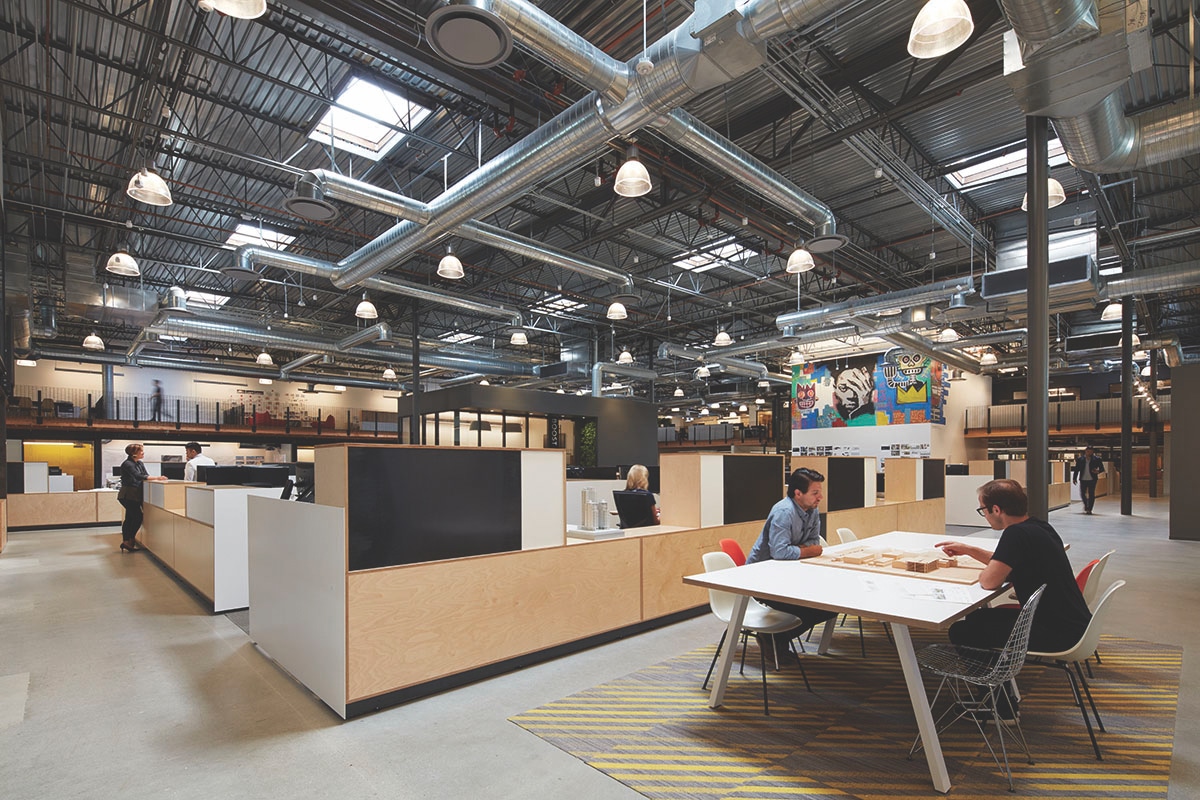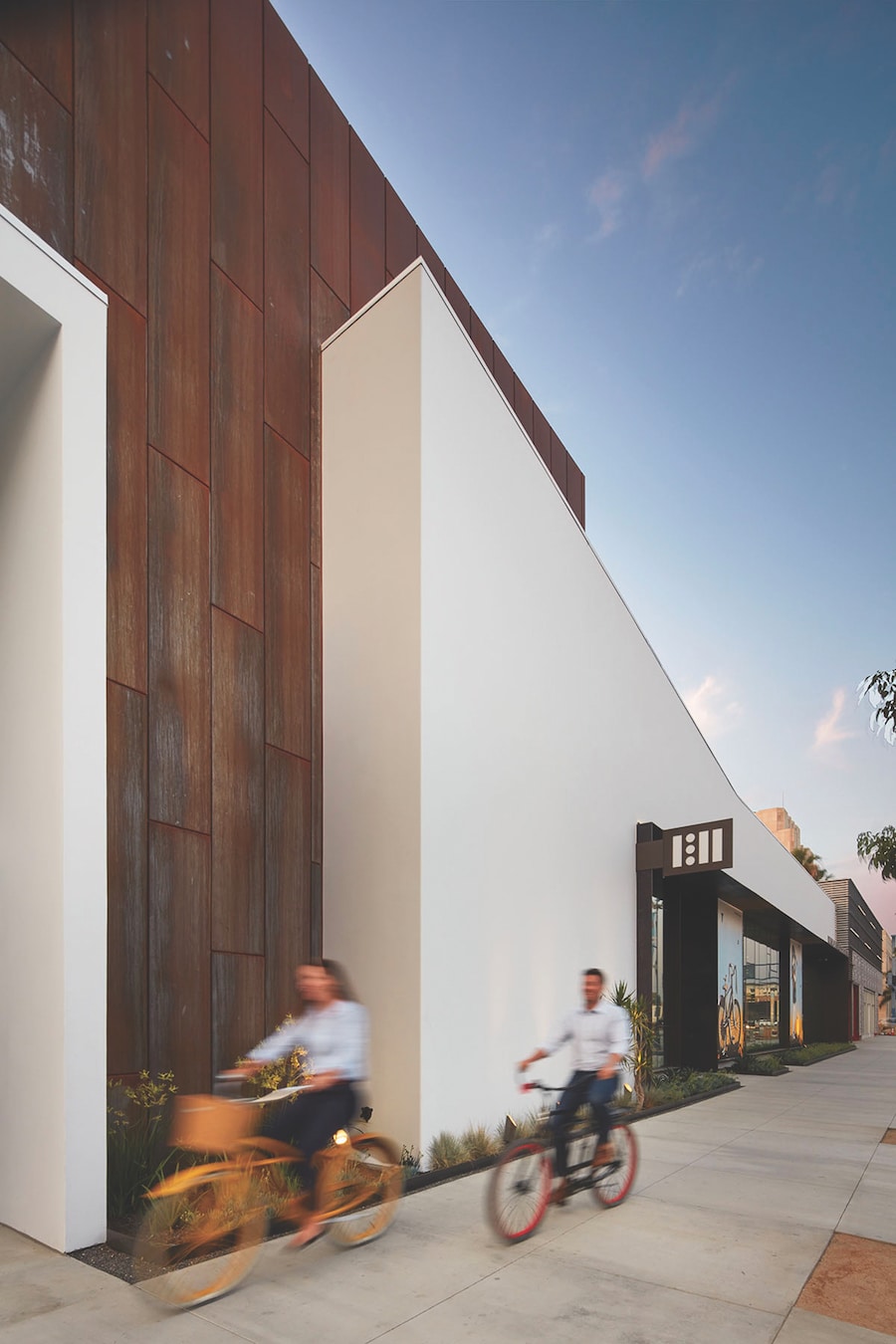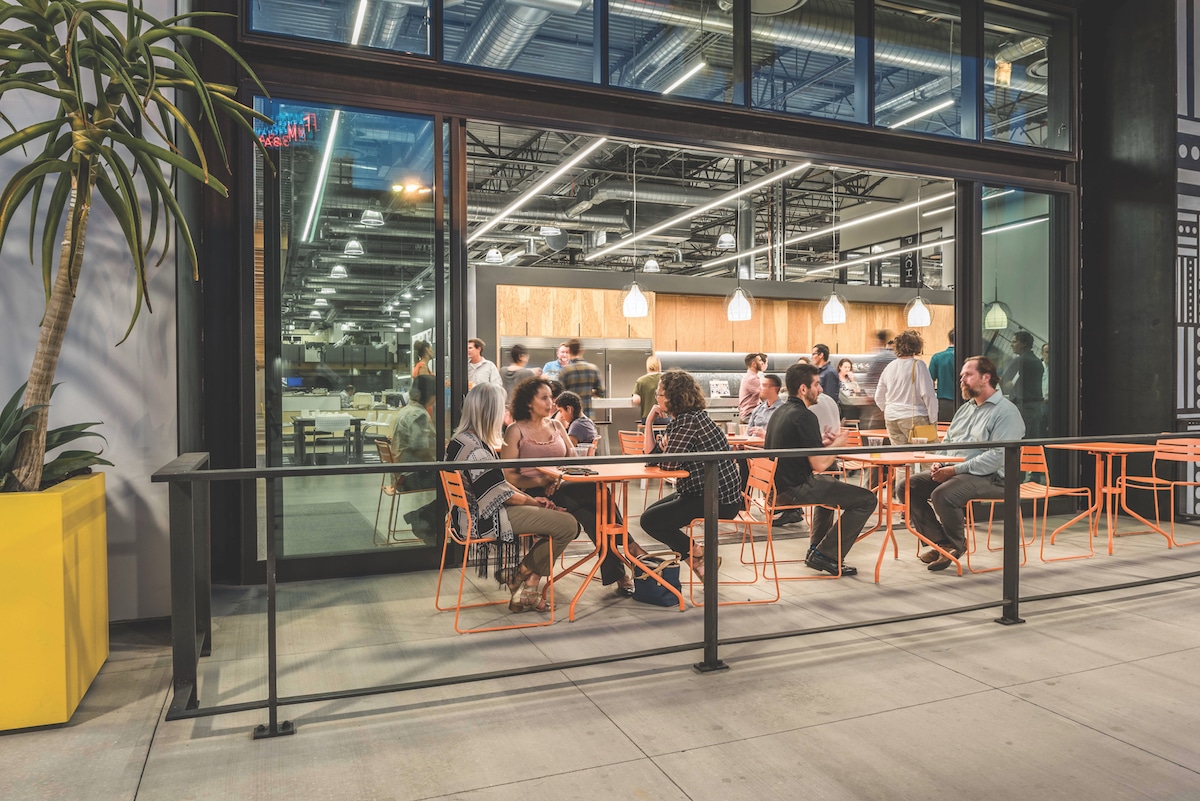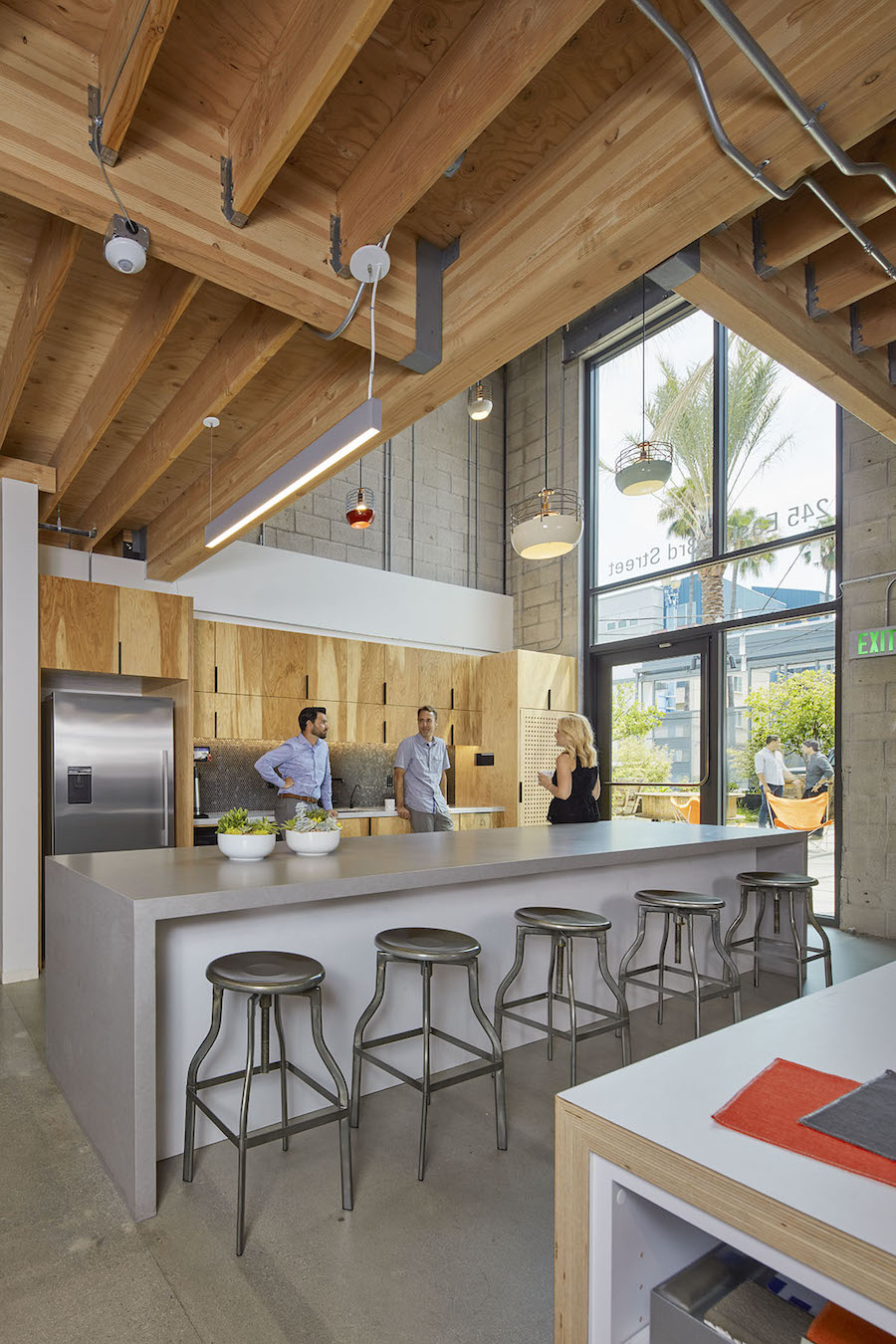
Skylights, open space, energy-efficient lighting, and more helped this building earn LEED—and it is well-certified, too. [Photo: Courtesy of Studio One Eleven]
When architecture firms Studio One Eleven and sister company Retail Design Collaborative decided to trade in their digs, they wanted to be engaged with and inspired by the world they worked in. While they were in a downtown Los Angeles high-rise with beautiful ocean views, they didn’t feel it fit them or what they do.
Instead, it seemed more fitting to transform a vacant Nordstrom Rack in Long Beach for their 34,000-square-foot office space. “We thought this could be our place to make a difference,” says Michael Bohn, design director and senior principal at Studio One Eleven.
The new office is the second architectural firm in the country—the first on the West Coast—to achieve the WELL certification. “We had heard about it and wanted to test it out for ourselves before recommending it to clients, and it has had a significant impact on our operations and the well-being of our staff,” says Sara Hickman, sustainability director and senior associate at Retail Design Collaborative and Studio One Eleven.

This well-certified office encourages healthy living practices. [Photo: Courtesy of Studio One Eleven]
Change for the Better
With sustainability—the building is LEED Platinum—and productivity at the forefront, the office was designed with open, light-filled spaces and 20 skylights. The team went from its previous office space of 47 private offices to having one private office for their human resources director. “It has really been phenomenal,” Hickman says. There is no physical distinction of power in this space; the staff and principals all have desks equal in size. “Everyone has equal access, and the collaboration between groups has been incredible. It really has been a lot of fun.”
In order to achieve WELL certification, the space had to meet certain air, water quality, and materiality requirements—limiting the chemicals in textiles and furniture used around the office and using products that can be recycled or reused. An on-site “living lab” allows the sustainability department to examine the quality of air, water, light, acoustics, comfort, and utility consumption, among other things, in real time.
It also meant a change in office culture—encouraging fitness and overall wellness through exercise classes, in-office sports teams, and healthy eating. “The last thing you want is someone home sick and not focused on their work,” Hickman says. “That has been a big change for us. People are more focused and have more energy throughout the day.”

[Photo: Courtesy of Studio One Eleven]

Studio One Eleven’s new workspace is the first well-certified office on the West Coast. [Photo: Courtesy of Studio One Eleven]
High-Tech Advantages
Having a new space also opened the doors for new technology—beyond low-flow fixtures, energy-efficient lighting, and HVAC. Installing Optoma touchscreen projectors—which use infrared technology to turn any wall into a full touchscreen experience—has led the firm to reduce paper usage by upwards of 75%. “It has been really life-altering for our practice,” Bohn says. The technology allows you to pull property plans up on any wall around the office, make changes, and save those to the cloud. The switch has virtually eliminated those stacks of paper that once dominated the office while making drawings more accessible and realistic.
The practice also switched from making models with their hands to using a 3D printer. The printer uses gypsum and glue to make property models and engage the client in the creative process. “It really has been an effective tool from any stage of the design process to show and communicate with the client,” Bohn says. Virtual reality has also helped make clients feel more involved, allowing them to experience the space before it’s built.

[Photo: Courtesy of Studio One Eleven]
Proof is in the Payout
Approximately 90% of the firms’ operating budget is spent on people. While reducing energy consumption and saving in utility areas is important, it all comes down to the people. “We are a service-based industry and we really value our staff. A 1% increase in productivity results in what could be an upwards of 20% profit,” Hickman says.
Read more gb&d green office stories.
